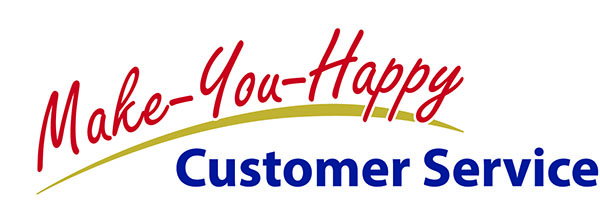On Tuesday, I told you that I used to absolutely hate hiring. All the time and effort and it was still just a crap shoot. It was such a crap shoot that we would keep under performing employees because the chances of getting a better one we’re less than playing craps. That all changed about 15 years ago when I meet Grant Robinson and started using him to hire properly.
I asked Grant to share some on his expertise on hiring with you. Here is his third of four articles.
In addition to reading this article and getting his free gift at the end I suggest you follow this link and watch Grant’s one minute video. www.HiringBestPractices.com.
The Final ½ a Secret (of 3 ½) to Hire the People You Need to Accomplish Your Business Goals
I hope you’ve read the past three articles and if so, here is a review of what you’ve learned:
Article 1 – Why you continue to recruit and hire poor performers even after all the things you have implemented into your selection process.
Article 2 – The #1 “talent” of the most productive individuals, teams & organizations… the talent of developing clear, written goals and objectives for not only your business and departments, but every position.
Article 3 – The advantage that virtually every small and large market leader shares (and is keeping a secret from you)… the secret of Job Matching that quadruples your odds of hiring a TOP Performer the first time.
And now, I’m going to help you discover…
Exactly What to Do if Your Employees are Currently Holding You Back
But first, let’s look at the ways that employees hold us back. At People Values, we’ve designated them into three categories: Unreliable, Unmotivated and Unproductive.
Your unreliable people are those that have attendance issues and are always tardy. Their lack of reliability leads to other members of their team having to fill in for them or work their shift.
Your unmotivated people are the lazy employees, who always seem to be complaining about something or someone. Their lack of motivation hinders their team from accomplishing goals.
Your unproductive people are the ones you spend your days micro-managing, continue to train and re-train and have to adjust their job responsibilities just to get some sort of benefit of having them on your payroll.
But here’s the thing: When you retain these unreliable, unmotivated and unproductive people and allow them to hold back your business… THEY ARE NOT the ones that are holding you back.
You are the one who has settled for the mediocrity that they bring to your business. You are the one who has continued to pay their salary robbing from your revenue and profitability.
Which leads me to…
The Final ½ a Secret of Hiring & Developing a TOP Performing Team (& Why it’s Only ½ a Secret):
When something is holding your business back and you know what it is, you must do something about it.
“Taking Action” is the final secret of TOP Performance. But you already know this and this is why it’s only ½ a secret…
The leaders of the most successful and profitable businesses continually Take Action and this is how they’ve become and how they’ll remain their market’s leader.
Making any excuse and blaming the economy, changes in your industry, the high expectations of your clients, your vendor’s quality control, the IRS and the government, your pricing, etc. is only going to detract from taking the action you must to improve. And these are all excuses the owners of struggling businesses have given me in the last week (I actually make a list and have heard 22 of them).
And these same owners have ALL also blamed their employees for their lack of success too. Even though they are the ones who fail to lead by example. They are the ones who haven’t established clear, written performance standards that their employees must meet. They are the ones who have settled for mediocrity in their business without taking action.
What is Going to Happen to Your Business (& You) if You Don’t Take Action ASAP…
You’ve had these problems for a while. They are not going to magically disappear. They never do… and usually only get worse.
Here are some of the things that will happen if you continue on with “business as usual”…
- You’ll only find more excuses on what is holding your business back
- Being surrounded by unreliable, unmotivated and unproductive people, your TOP Performers will eventually lose their desire to fill in for others, deal with the conflict surrounding them and stop performing too
- Your best people will eventually lose the remaining faith they have in you, quit and go to work for your competitor
- You’ll have to scramble and recruit / hire an employee… but without an effective recruiting or selection system, you’ll probably just pick another non-producer
- Without the systems to develop your leaders or employees, you’ll become even less profitable
- You’re going to lose the will to continue on and accomplish the dreams you once had (whether 2 or 20 years ago) when you started your business
If any of the trends have already started, today is the day to take action. In 17-years of helping good (and even bad) businesses become great, I’ve learned it’s never too late to take action.
I know… Sometimes You Don’t Even Know Where to Start, Right?
96% of the clients we partner with have come to us through referrals from industry experts, business coaches and our clients (though our clients never tell their direct competitors about us). Job Matching is their secret weapon.
Most of these new partners never knew there was a step-by-step, do it yourself service like ours to create a “People System” to recruit, hire, train, develop and retain TOP Performers.
But it’s exactly what they needed. And by developing one process at a time, they’ve become market leaders… and so can you. Even though right now, there are so many things you need to implement you don’t even know where to start.
If after reading these articles the past two weeks you believe that your business has more potential and it’s time to take action, let us provide some guidance on what to start with.
We usually charge $149 for our TOP Performance Consultation (up to an hour-long phone conversation) where we help you develop a three-step action plan to start moving in the right direction.
The Gift for Reading this Entire Article…
As I promised Keith, I’d give a gift just for reading each article to the end.
The gift this time is for a complimentary TOP Performance Consultation where we can talk about anything that you’d like. Whether that is how to improve your “people system” or any other aspect holding your business back from reaching it’s potential.
Here is where you can schedule your consultation right now: https://peoplevalues.com/tpconsultation/.
Do What You Do So Well
That People Can’t Help Telling Others About You
Keith Lee
Keith@KeithLee.com










